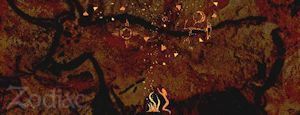 The southern constellation of Tucana was named after a colorful South American bird in the late sixteenth century by Petrus Plancius. It is small but important. It contains some of our best examples of cosmic real estate, a dwarf galaxy and a globular cluster, both orbiting the Milky Way.
The southern constellation of Tucana was named after a colorful South American bird in the late sixteenth century by Petrus Plancius. It is small but important. It contains some of our best examples of cosmic real estate, a dwarf galaxy and a globular cluster, both orbiting the Milky Way.
Firstly, there’s the Small Magellanic Cloud. Sure, Ferdinand Magellan is famous for making school children learn the word “circumnavigate” but what the kids should also know is that there are small subordinate galaxies circumnavigating the Milky Way as we speak. The crews of Magellan sailed far enough south to notice two detached clouds, like bits of Milky Way, way off to the side, floating out there on their own. They named them the SMC and the LMC in anticipation of the coming popularity of acronyms.
 This was the early 1500’s when folks were certain that the Earth was the biggest thing in the Universe and that everything else was attached to a big glass bubble surrounding us. So these two starry clouds were like smudges on that bubble.
This was the early 1500’s when folks were certain that the Earth was the biggest thing in the Universe and that everything else was attached to a big glass bubble surrounding us. So these two starry clouds were like smudges on that bubble.
 By the way, the men of Magellan’s crews also believed in predestination, that the number of days of their lives were written in a book somewhere up there, and they were dismayed when they got back to Europe to find that going west around the world caused their calendars to be one day short. They had somehow seen one less sunrise and one less sunset than the folks who stayed at home had seen. I’ll leave it to the reader to do that math. Anyway, other than this slight rift in the spacetime continuum, and discovering a couple of extra-galactic satellites, the trip was mostly going from one island to another looking for an open grocery.
By the way, the men of Magellan’s crews also believed in predestination, that the number of days of their lives were written in a book somewhere up there, and they were dismayed when they got back to Europe to find that going west around the world caused their calendars to be one day short. They had somehow seen one less sunrise and one less sunset than the folks who stayed at home had seen. I’ll leave it to the reader to do that math. Anyway, other than this slight rift in the spacetime continuum, and discovering a couple of extra-galactic satellites, the trip was mostly going from one island to another looking for an open grocery.
 The Small Magellanic Cloud is tiny, a mere 7 billion times the mass of the sun. The Milky Way is probably about a trillion. Now days astronomers think that big galaxies are mostly just combinations of galaxies that came together in the past. That seems to be an on-going thing. As they grew over time, the biggest began to dominate with superior concentrations of gravity, and the remaining dwarfs fell in the well, so to speak.
The Small Magellanic Cloud is tiny, a mere 7 billion times the mass of the sun. The Milky Way is probably about a trillion. Now days astronomers think that big galaxies are mostly just combinations of galaxies that came together in the past. That seems to be an on-going thing. As they grew over time, the biggest began to dominate with superior concentrations of gravity, and the remaining dwarfs fell in the well, so to speak.
We have found quite a few dwarf galaxies orbiting the Milky Way in last few decades. We feverishly scan for evidence of new ones. Most are not so obvious as the Small and Large Magellanic Clouds. A while back some astronomers saw something that looked diminutive but galactic in the constellation Gemini and named it Snickers, like the little fun size candy bars we swipe from the kids on Halloween. But it turns out that what they found is probably just a jet of stellar material, a star-fart.
 There is a lot more to galaxies than what glows in the dark. A huge halo of unseen material surrounds the bright disk of the Milky Way. Our solar system is in the suburbs. Out there in the halo is the boondocks. In that huge sphere of mystery there are at least 150 globular clusters orbiting our galaxy. A great example is 47 Tucanae.
There is a lot more to galaxies than what glows in the dark. A huge halo of unseen material surrounds the bright disk of the Milky Way. Our solar system is in the suburbs. Out there in the halo is the boondocks. In that huge sphere of mystery there are at least 150 globular clusters orbiting our galaxy. A great example is 47 Tucanae.
 Globular clusters are made of some of the oldest stars in the universe. They are possibly older than the galaxies, which makes sense because they cook quicker and have fewer portions of the ingredients. Today they tend to not have much in the way of hot blue stars. Those hot blue stars live fast and die young like James Dean, and most globulars ran out of gas to make new stars a long time ago.
Globular clusters are made of some of the oldest stars in the universe. They are possibly older than the galaxies, which makes sense because they cook quicker and have fewer portions of the ingredients. Today they tend to not have much in the way of hot blue stars. Those hot blue stars live fast and die young like James Dean, and most globulars ran out of gas to make new stars a long time ago.
 In a telescope a globular cluster is an amazing sight. They’re gorgeous. They fill the field of the eyepiece with stars. They have 10’s of thousands of stars. Some even have 100’s of thousands of stars. And 47 Tucanae actually has millions of stars! So sometimes you hear astronomers refer to the globulars as “Los Campos de Diamantes” which means the fields of diamonds.
In a telescope a globular cluster is an amazing sight. They’re gorgeous. They fill the field of the eyepiece with stars. They have 10’s of thousands of stars. Some even have 100’s of thousands of stars. And 47 Tucanae actually has millions of stars! So sometimes you hear astronomers refer to the globulars as “Los Campos de Diamantes” which means the fields of diamonds.
I always thought the name globular clusters sounds like it might refer to some kind of tasty snack treat (they sparkle when you bite ’em).
Carpe Noctem.













August 14, 2016
Astronomy